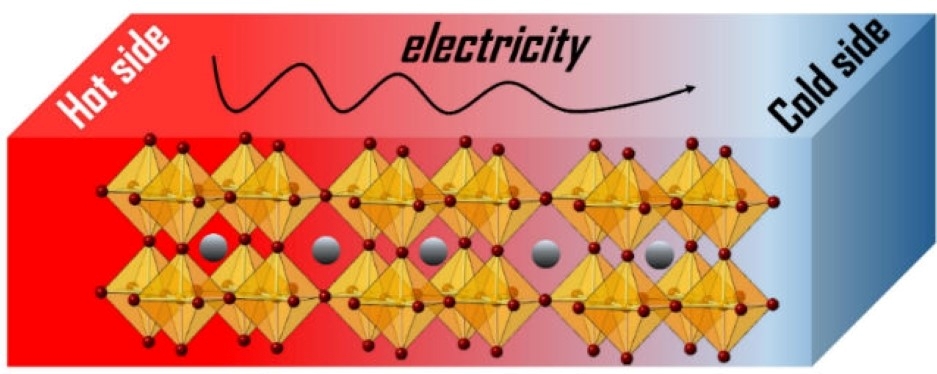
Halide perovskites have been proposed as affordable alternatives to existing thermoelectric materials, but research into their suitability for thermoelectric applications has been limited.
3D-printed thermoelectric device sets new records
Printed thermoelectric devices to power wearables using body heat
In this study, published in Nature Communications, scientists at from Queen Mary University of London (QMUL) conducted experiments on thin films of the halide perovskite - caesium tin iodide - to test its ability to produce electrical current from heat. The researchers found they were able to improve the materials' thermoelectric properties through methods that involved partial oxidation and the introduction of additional elements into the material.
In a statement, Dr Oliver Fenwick, lead Royal Society University Research Fellow and lecturer in materials science at QMUL, said: "For many years halide perovskites have been suggested as promising thermoelectric materials. But whilst simulations have suggested good thermoelectric properties real experimental data hasn't met these expectations.
"In this study, we successfully used 'doping' techniques, where we intentionally introduce impurities into the material, to tweak and improve the thermoelectric properties of caesium tin iodide, opening up options for its use in thermoelectric applications."
Thermoelectric materials, which use temperature differences to generate electrical energy, have been suggested as a sustainable approach to energy production and recycling, as they can convert waste heat into electricity. However, current widely used thermoelectric materials are costly to produce and process.
"With the heightened global awareness of climate change and realisation that a number of renewable energy solutions will be needed to meet our energy demands, thermoelectric generators are now at the centre stage in today's "green technology" debate,” Dr Fenwick, said.
"The thermoelectric materials we currently have are expensive, and some even contain toxic components. One of the largest growth areas for thermoelectric technology is for domestic, commercial or wearable applications, so there's a need to find cheaper, non-toxic materials that can also operate well at low temperatures, for these applications to be fully realised. Our research suggests the halide perovskites could, with some fine-tuning, fill this void."










英國鐵路公司如何推動凈零排放
It would be better if the trains had good coverage of the country. Large areas have no easy connection and so cars (or buses?) and lorries are still...